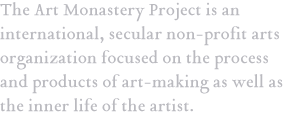9/10
They say that in any average monastery nine out of ten who come to try the life end up leaving. It’s all about handling the pressure of interpersonal relationships. Either you give up and go away or you stay and make it work. Ultimately there is only one way to make the monastic life work—by demonstrating the willingness to resolve conflict by forgiving others, asking their forgiveness, reconciling with them, and by humbling yourself even when you think you are right. This process does not take place in every monastery, and as a result the monasteries which are healthy are very, very healthy, while the monasteries that go bad go very, very bad. In either case, they serve as an example to the parish, either a good example or a bad example.
What monastic life, at its best, has to offer the parish is a vision of what the Kingdom is like when we make our relationships with other persons work, because ultimately healthy relationships – with other human persons and with God – are the only thing that matters.
—Monk Cosmas Shartz in the current issue of In Communion, journal of the Orthodox Peace Fellowship of the Protection of the Mother of God, February2011, p. 35, also available here.
Our English word “decimate” comes from the Latin for “to remove a tenth“. Do we have a word for “to leave a tenth behind”? It’s still a pretty bleak figure.
Shartz’s is one view of the relationship of the orthodox monastery and the parish—the lay religious. Monasteries do the hard work of living together in community, and the people watch in awe. Thus the separation and the covenant between the monastic and secular are a fairly clean, with only images and illusions (and money and prayer) passing between.
What’s next?
Leave a Reply
You must be logged in to post a comment.




